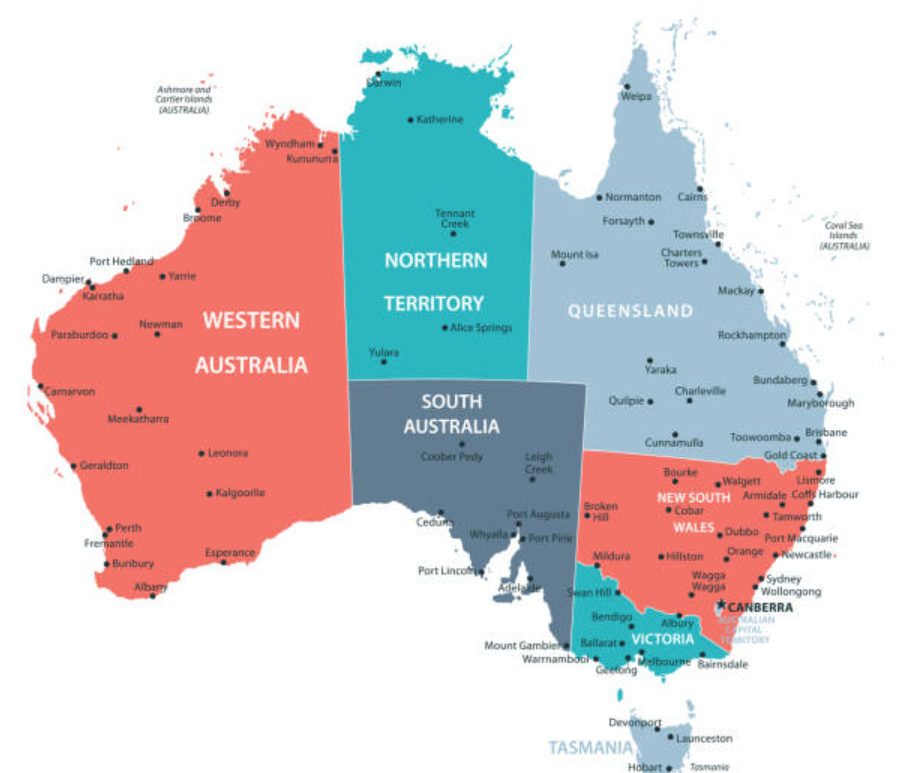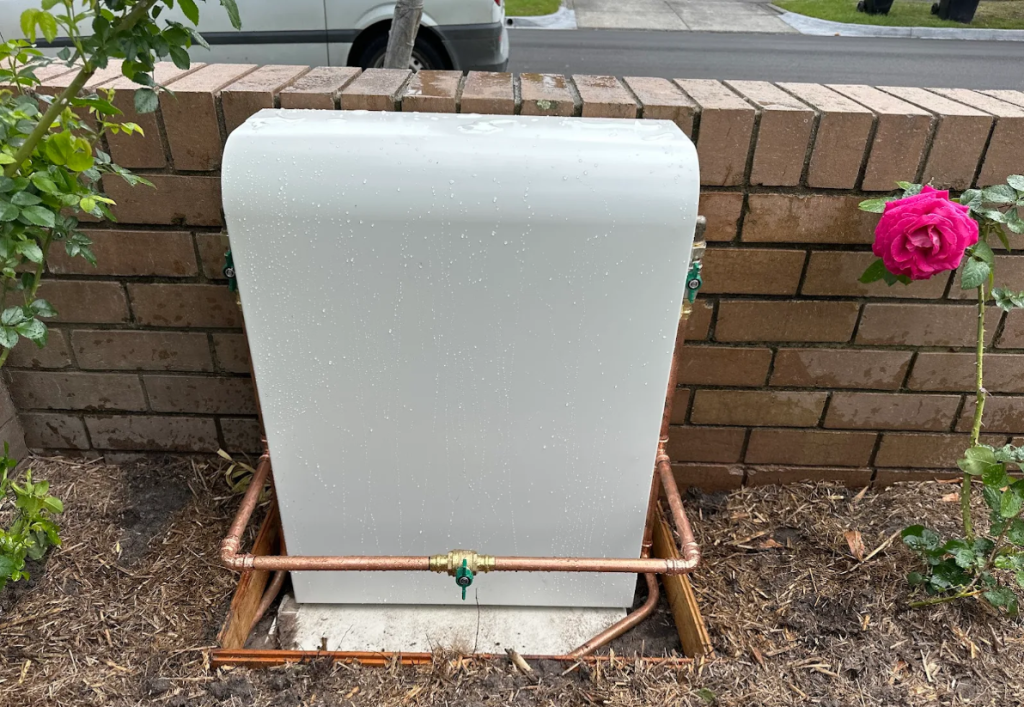Table of Contents
INTRODUCTION

We discuss Australia’s water contaminants issue and why reverse osmosis (RO) systems are the best solution for any Australian in this blog. Australia, although renowned for its beautiful vistas and landscapes, is not without its water quality issues. Dirty water is a problem everywhere, in urban and rural areas alike, but the polluted minerals change from region to region. This State-by-State Water Contaminant Report will dissect what contaminants are present in Australia’s water supply, and investigate the areas that are contaminated with these substances, and reverse osmosis is required to ensure clean, healthy drinking water for all Australians.
Water pollution is becoming an increasingly pressing issue in Australia as several areas are dealing with specific issues based on their geographic situations, industries, and agriculture. It seems that reverse osmosis filtration is the start in removing contaminants and providing Australians with peace of mind knowing their drinking water is safe. By taking a closer look at individual states’ water contaminant concerns, we’ll find out where reverse osmosis filtration is a must-have.
Understanding Water Contaminants in Australia: The Need for a State-by-State Report
The safety of Australia’s drinking water is being threatened by pollutants from industrial, agricultural, and natural sources. And although municipal water treatment plants in many areas remove some of these substances, a hodgepodge of pollutants ranging from agricultural runoff to pharmaceuticals permeates our tap water at troubling levels. These can be anything from chemicals to bacteria, viruses, and even agricultural runoff with pesticides and herbicides. The impact of water pollution on the health and the environment is severe, especially in the case of vulnerable populations like children, old people, or sick persons.
Not all of Australia’s water-quality issues will fit in the same box. No two states or territories are subjected to the same corruption threats in the country. Some areas may be more impacted by industrial chemicals, others by agricultural runoff or microbial contamination. As such, a State-by-State Water Contaminant Report is essential to understand how different parts of the country are affected by contaminants and what role reverse osmosis plays in mitigating them.
New South Wales: Chemical Contamination and Industrial Risks
Australian State New South Wales (NSW) sits within its largest city, Sydney, and is struggling with water contamination problems. Most urban municipal water is treated with chemicals like fluoride, chlorine, and even chloramines that are used to sanitize the water and keep it safe to drink. But when inhaled at high amounts, these chemicals may be harmful and cause skin irritation, respiratory problems, and other long-term health issues. The State-by-State Water Contaminant Report for NSW also raises concerns about industrial chemicals, including benzene and petroleum products, which can enter the water supply from industrial spills or runoff.
In NSW’s rural and regional areas, agricultural runoff means potentially dangerous pesticides and herbicides wind up in the water. These chemicals, which farming relies on to protect crops, typically make their way through local rivers, dams, and underground water supplies, threatening the health of people who rely on them.
Where Reverse Osmosis is Essential in New South Wales?
Reverse osmosis is a necessity for such applications in both urban and rural NSW. For those residing in cities such as Sydney, an RO system will eliminate any extra chlorine, fluoride, and other chemical pollutants from tap water. Furthermore, for rural residents reliant on well water, reverse osmosis can eliminate contaminants from agriculturally treated soil, which isn’t otherwise removed through a conventional regulation system, producing bubbles in tap water. For a wide variety of chemicals, reverse osmosis is proven to be the best way in NSW, Australia.
Victoria: Heavy metals, agricultural contamination, and urban water quality
Heavy metal contamination and agricultural run-off are problems in Victoria. In regions with deteriorating infrastructure, including parts of Melbourne, water systems can be tainted with high levels of lead and mercury from aging pipes or industrial waste. The State-by-State Water Contaminant Report for Victoria also confirms that pollution from pesticides, herbicides, and fertilizers is caused by agricultural runoff from rural areas. And the use of glyphosate in farming has become increasingly problematic.
Where Reverse Osmosis is Essential in Victoria
They are a must-have for everyday life in Victoria, particularly those living in the countryside, where agricultural chemicals can be absorbed inadvertently into water supplies. Plenty of cleanses by reverse osmosis should be able to remove heavy metals, fluoride, and other industrial pollutants that may be carried through in the municipal treatment process. Installing a reverse osmosis system in both urban and rural areas will provide purified water, free from harmful substances, ensuring the health and well-being of Victorian families.
Queensland: Microbial Contamination, Bacterial Risks, and Waterborne Diseases
Queensland, and its tropical coastal environment, presents a high-risk profile for microbial exposure. Diseases transmitted through water, particularly from pathogenic bacteria such as E. coli and Salmonella, are a major African health issue. Queensland State-by-State Water Contaminant Reports indicate rural communities and outlying areas are at greater risk of bacterial infestation because of inadequate sanitation, old pipes, and inconsistent water treatment.
In coastal regions, pathogenic pollution from stormwater runoff can render drinking water sources unsafe to drink. Queensland’s high use of rainwater tanks for water storage has its own risks if the tanks are not adequately maintained and the water is not regularly treated.
Where Reverse Osmosis is Essential in Queensland
Reverse Osmosis Filtration is a necessity in Queensland, which includes rural and remote residents who may not have good water treatment. RO systems are very effective in eliminating harmful bacteria, viruses, and parasites in the water for safe drinking. In big cities such as Brisbane, reverse osmosis can also offer an extra barrier against waterborne diseases, offering some reassurance to both homes and businesses.

South Australia: Arsenic, Saltwater, and Desalination Issues
Threats to South Australia include water pollution, particularly by saline intrusion and arsenic from some of the naturally occurring groundwater sources. Regular desalination is supplied in some areas, like Adelaide, meaning residents sometimes drink water that has been desalinated and might contain small amounts of salt or other substances. Arsenic pollutants are also a problem in places where mining was undertaken in the past.
The South Australian State by-State water Contaminant Report also indicates that, indeed, the state’s limited water stock and dependence on groundwater make it an easy target of saltwater intrusion as well as other variations of contamination.
Where Reverse Osmosis is Essential in South Australia
For South Australians, especially in Adelaide, desalination and the process of reverse osmosis make sense as a response to hydration, but also removing contaminants like arsenic. It can purify desalinated water further by eliminating salt and other impurities, thereby providing residents with pure and safe drinking water. With saltwater intrusion and arsenic feared, a reverse osmosis filtration system is mandatory for good water.
Western Australia: Fluoride, Pesticides, and Agricultural Chemical Contaminants
In Western Australia, a reverse osmosis filtering system is necessary to remove excess fluoride as well as harmful agricultural chemicals from drinking water. In rural areas, especially where agricultural runoff is common, an RO system is useful to purify water and reduce harmful contaminants. Not to mention, both urban and rural residents will be able to trust that their drinking water will be clean and safe to drink and free from chemicals that may have long-term health risks.
Tasmania: Microbial Risks and Agricultural Contaminants
Although Tasmania is known to be fairly clean in regard to water sources, it still has the potential for contamination. Agricultural runoff can be a significant contributor. The State-by-State Water Contamination Report for Tasmania states that pesticides, herbicides, and other chemicals associated with agriculture are water contaminants in rural areas. The water quality in Tasmania is relatively good for urban areas; however, in rural areas, there is still a chance of contamination with microbial pathogens.
Where Reverse Osmosis is Essential in Tasmania
Reverse osmosis filtration is very effective at removing pesticides, herbicides, and other potentially harmful agricultural chemicals from drinking water in Tasmania. For anyone living in a rural area of the state who relies on well water, installing an RO system can help protect against these contaminants in one more way. RO systems can also provide reassurance for city dwellers to make sure the water they drink is free of contaminants.
Australian Capital Territory (ACT): Industrial Contamination and Heavy Metals
In the Australian Capital Territory (ACT), drinking water risks of contamination are exacerbated by aging infrastructure and industrial activity in the region. The State-by-State Water Contaminant Report for the ACT raises flags about heavy metals (lead, mercury) and other industrial contaminants nascent with older pipes or local industries that may leach into drinking water.
Where Reverse Osmosis is an essential in the ACT
For residents of the ACT, especially those who live in older neighborhoods or older buildings, reverse osmosis is a must for removing heavy metals and other industrial contaminants from drinking water. RO systems are an extraordinarily effective way to ensure clean, safe drinking water free of contaminants that could prove to be a major problem for long-term health and safety.
Northern Territory: Remote Water Sources and Microbial Contamination
The Northern Territory is home to many large, isolated communities that face unique challenges related to water contamination. Many of these communities use local water supplies that may be at risk of microbial contamination due to human waste, livestock, and other environmental uses. While communities in the Northern Territory are considered low risk because of their remoteness, the State-by-State Water Contaminant Report for the Northern Territory identifies microbial contamination as a risk, in particular, as it relates to communities without proper sanitation facilities.
Where Reverse Osmosis is Essential in the Northern Territory
For many people in the remote communities in the Northern Territory, reverse osmosis is necessary for the safe availability of drinking water. RO systems offer the best defense against harmful bacteria, viruses, and other microbial contaminants by providing safe purified water, particularly in areas without proper water treatment systems.
The Future of Water Purification in Australia: Embracing Reverse Osmosis for Safer Drinking Water
With concerns of water contamination on the rise across Australia, reverse osmosis can deliver a long-term solution for safe, pure drinking water. While water treatment facilities in many states work to enhance water quality, there are still risks that contaminants pose to water users, especially in rural and remote areas. The increased awareness of waterborne diseases, heavy metals polluting drinking water, and agricultural run-off, coupled with the need for a growing population to access clean water, highlights the opportunity to embrace advanced filtration technologies, such as reverse osmosis.
Reverse osmosis systems do not provide pure drinking water just for today’s use; they provide a sustainable solution for future generations. Reverse osmosis systems, as technology continues to evolve, will become more efficient and affordable, allowing Australians throughout the nation to protect the purity of their drinking water.
Conclusion: Where Reverse Osmosis Is the Best Solution
There has been a great urgency for clean, safe drinking water all over Australia. Each state struggles with its concerns of water contamination, from chemical pollutants in New South Wales, microbial risk in Queensland, heavy metals in Victoria, or saltwater/arsenic in South Australia.
Reverse osmosis is the ultimate solution and the right purified water for residents in every region. For Australians, investing in your own reverse osmosis system is one of the most important methods of having access to clean, safe drinking water. Reverse osmosis will provide you with peace of mind, protecting you from dangerous contaminants- and your overall health- whether you reside in a metropolitan city or a more remote rural area.
_edited_9.png)